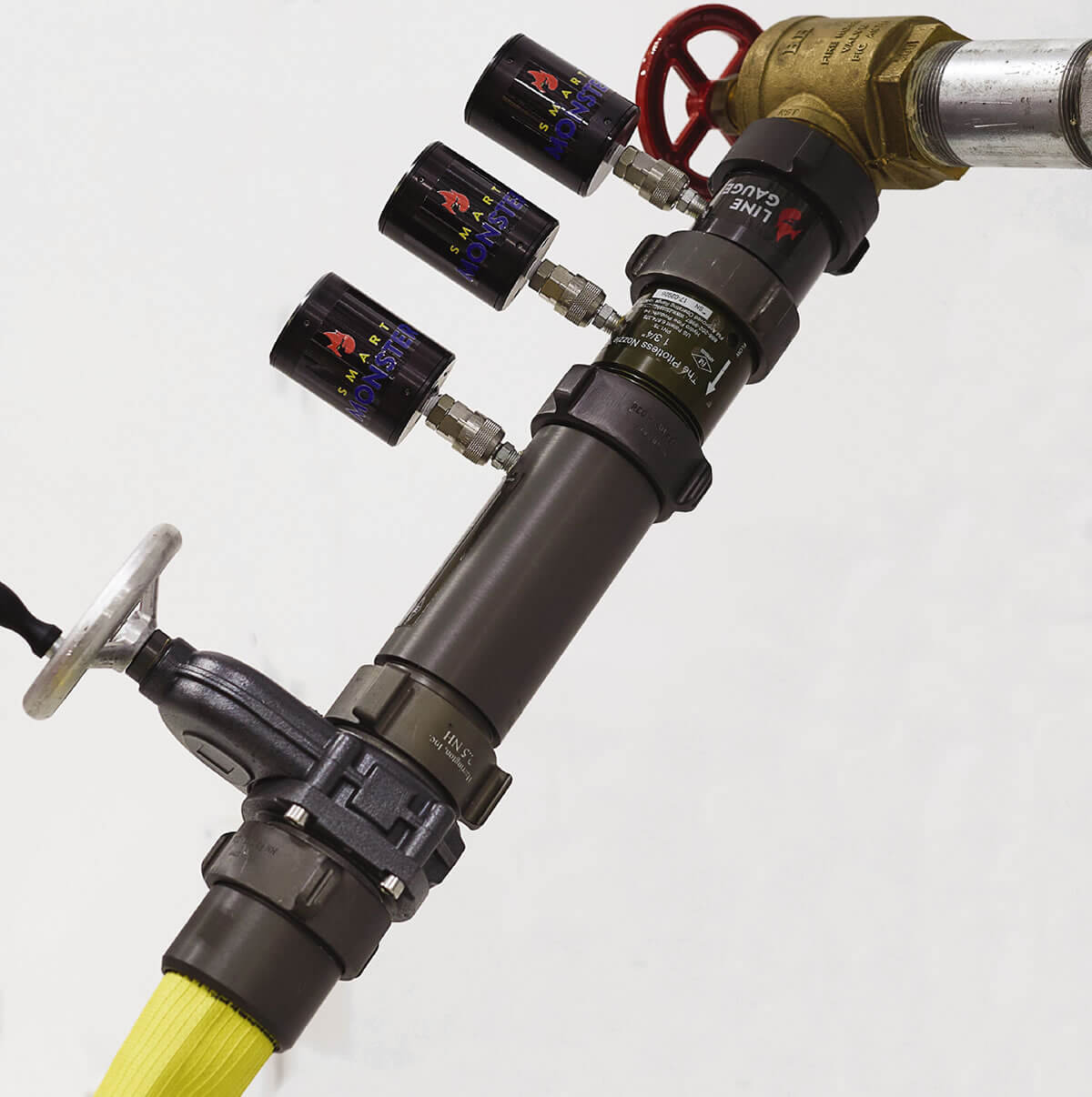THE ONE-SOURCE SOLUTION FOR ALL OF YOUR TESTING NEEDS!
Our business was launched in 1996 with our flagship product, the Hose Monster®. It was the first flow-measuring device to enable safe discharge of high-flowing water, minimizing property damage and traffic interference. The professionals at The Hose Monster Company understand the industries and sectors in which our clients operate. We turn our practical knowledge into clear advice and find solutions that nobody else can provide. When you face unique and challenging testing situations, our knowledgeable staff stands ready to find the best equipment and procedural solutions for you. Your satisfaction is the truest mark of our excellence.
- HYDRANT FLOW TESTING
- MAIN FLUSHING
- DECHLORINATION
- FIRE PUMP TESTING
- APPARATUS TESTING
- SOFTWARE
- STANDPIPE TESTING
HYDRANT FLOW TESTING
Flow tests are conducted on hydrants to determine water availability in planning for firefighting activities, fire sprinkler systems or domestic water demand. The tests help detect closed valves or wall deposits. This can be extremely useful in determining the condition of the water distribution system being tested. A well-maintained water system enables firefighters to extinguish flames and prevent large-scale damage or loss of life.
HOW OFTEN DO I TEST A HYDRANT?
- AWWA recommends flow testing all areas at least every 10 years (AWWA M17).
- NFPA requires flow testing of underground and exposed piping at least once every five years (NFPA 291).
WHERE DO I FIND MORE INFORMATION ON HYDRANT FLOW TESTING?
- NFPA 291 — Recommended Practice for Fire Flow Testing and Marking of Hydrants
- AWWA Manual 17 — Installation, Field Testing and Maintenance of Fire Hydrants
Hydrant Flow Test Calculator
Calculates the rated capacity at 20 psi for a fire flow test.

STANDPIPE & PRV TESTING
A standpipe is the vertical piping that connects fire sprinkler systems and hose stations between multiple floors. It is common to see standpipes in stairwells of high-rise buildings. A rooftop standpipe test verifies the water supply, pump and piping at the topmost part of the system.
In the past, the only way to perform rooftop standpipe tests was with playpipes and hand-held pitots. Safely securing playpipes and controlling discharge water to avoid interfering with pedestrian and vehicle traffic was a significant challenge, typically requiring that testing be in the early morning hours. The introduction of the Hose Monster® line of equipment changed all that.
The In-Line Pitotless Nozzle' allows you to take flow rate measurements at the valve, allowing you to run hose or piping to an express drain, or down several flights of stairs to discharge the water safely, outside in the street.
COMMON APPLICATIONS
- Stairwell standpipe flow testing
- Pressure reducing valve flow testing
- Rooftop manifold testing
- Fire pump flow testing
- Fire flow testing of hydrants
- An in-line bypass flow meter for fire pumps
HOW OFTEN DO I TEST A STANDPIPE OR PRV?
In accordance with the 2020 Edition of NFPA 25, 6.3.1.1, "a flow test shall be conducted every 5 years on all automatic standpipe systems to verify that required flow and pressure are available at the hydraulically most remote hose valve outlet(s) while flowing the standpipe system demand."
NFPA 25, Chapter 13 outlines the testing parameters for all pressure-reducing and pressure-regulating valves as follows: "a full flow test shall be conducted on each devices at 5-year intervals and compared to previous test results". Master pressure-regulating device are to be tested as such: "a full flow test shall be conducted on each valve annually and shall be compared to previous test results."

